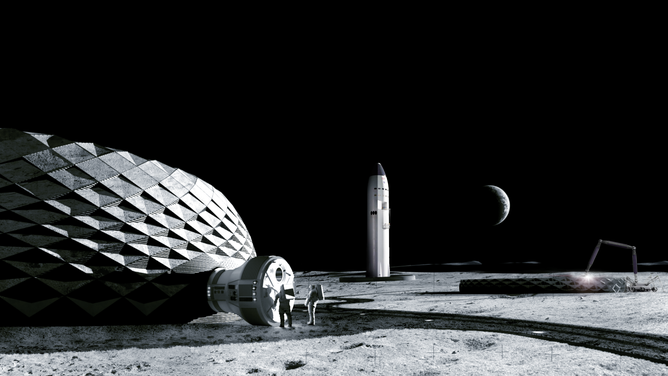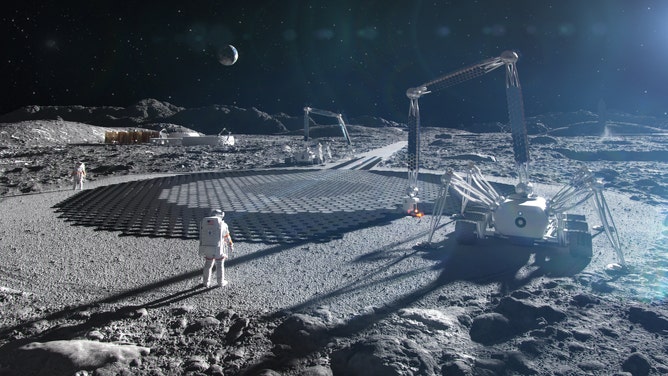NASA awards Houston company $67 million to develop 3D-printed lunar habitats
NASA awarded ICON $57 million to develop 3D-printed lunar habitats under a small business innovation program. ICON will research and develop methods to use local lunar soil and materials to construct housing and other infrastructure on the moon.

A rendering of ICON’s vision for Olympus, the multi-purpose ISRU-based lunar construction system. (Image: ICON)
(FOX Weather)
If astronauts are going to live on the moon for long periods, they need someplace to stay but launching construction materials and supplies from Earth to the lunar surface is extremely costly. This is where NASA hopes housing company ICON can find a solution.
The space agency recently awarded the Houston-based company a $57 million contract under NASA's Small Business Innovation Research program to develop a lunar construction system primarily using resources found on the moon.
ICON uses 3D-printing robots and software to build homes and military barracks on Earth and believes it can do the same on other worlds, including the moon and Mars.
THE BUSINESS OF SPACE DIRT: ARTIFICIAL LUNAR, MARTIAN AND ASTEROID SOIL IS IN DEMAND
Already, ICON built a 3D-printed habitat out of simulated Martian materials at NASA's Johnson Space Center. The 1,700-square-foot habitat will be used for analog Mars missions under the Crew Health and Performance Analog, or CHAPEA, program. Beginning in the summer of 2023, four crew members will live in the simulated Mars habitat at JSC for up to a year.
According to a news release, ICON plans to follow a "live off the land" approach for its moon habitat construction by using native materials like regolith and rocks found on the moon.
"To change the space exploration paradigm from ‘there and back again’ to ‘there to stay,’ we’re going to need robust, resilient, and broadly capable systems that can use the local resources of the moon and other planetary bodies," ICON co-founder and CEO Jason Ballard said. "We’re pleased that our research and engineering to date has demonstrated that such systems are indeed possible, and we look forward to now making that possibility a reality."
The company plans to use these resources to build everything from landing pads to housing.

A rendering of ICON’s vision for Olympus, the multi-purpose ISRU-based lunar construction system. (Image: ICON)
Under the development and research phase, ICON will use lunar regolith samples from Apollo missions and simulated moon soil to work on the initiative called Project Olympus.
NASA'S ORION SPACECRAFT BREAKS APOLLO DISTANCE RECORD FROM EARTH WHILE ORBITING THE MOON
Under the Artemis program, NASA plans to return astronauts to the moon by 2025.
The space agency's first test flight of its mega moon rocket, the Space Launch System, went well in mid-November, and the uncrewed Orion spacecraft is currently orbiting the moon. If Orion returns home in December as planned, a NASA astronaut crew will launch on the spacecraft in 2024.